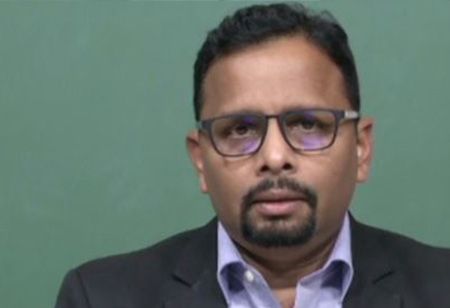Aseem Sahu, Deputy Drugs Controller, Medical Device Division, CDSCO

In a joint workshop between CDSCO and the Confederation of Indian Industry, Aseem Sahu, Deputy Drugs Controller, Medical Device Division, CDSCO, shares his view on the regulatory requirements for medical devices, components, and import restrictions. He also pointed out that the import of any refurbished or second-hand medical devices into India will be disallowed by the Central Drugs Standard Control Organisation till a regulation is established. Following are the key insights from this address.
The government is committed to many initiatives that are taken to form an ecosystem in the nation's medtech sector. The National Medical Device Policy 2023 has come up, and one of the major components of the national medical device policy is streamlining the regulatory mechanism for medical devices. For that reason, the Ministry of Health and Family Welfare has developed comprehensive regulations. Nevertheless, there is scope for a separate law for drugs, and the Central Drugs Standard Control Organisation (CDSCO) has made efforts, though it is yet to be considered; it is already ready for consideration.
Considering the import market size of India, it accounts for a total of 80%, while the remaining 20% represents indigenous capability that encompasses the manufacturing of disposables, implantable devices, and in vitro diagnostic products. These are the major segments where India has achieved full self-reliance. The nation exports these medical devices, and it is not only key that India's products are accepted by other countries but also that the most stringent regulatory authorities consider the products manufactured in the country and exported to those nations. Hence, for all disposables, India has built up its indigenous capability. Reflecting on implants, India has implantable devices like orthopaedic implants, cardiac stents, heart valves, and IOLs with indigenous capability, and many of these quality products are being produced and exported to most of the developed nations.
In vitro diagnostics also follow a similar trend, but the concern is that the high-end medical equipment produced in India must come up with indigenous capability, and many indigenous manufacturers have started manufacturing high-tech, high-end medical equipment. This is key for ensuring indigenous dependency, allowing India to export high-end quality products to other countries.
After the implementation of the Medical Devices Rule (MDR 2017), more than 3,800 site licenses have been approved, and approximately 3,850 sites belong to all classes of devices. More device manufacturing sites are involved in the manufacturing of high-risk devices like Class C or Class D devices. Besides, there are around 10,000 import licenses, which correspond to 10,000 manufacturing sites registered by CDSCO. This also shows the volume of individual devices involved. The Medical Device Rule 2017 has been published because, under the drug rules, there is no specific requirement concerning the import, manufacture, sales distribution, and clinical investigation of medical devices, and it has been implemented from the 1st of January 2018.
Medical devices intended for certain therapeutic purposes require regulatory requirements, and based on the risk of the accessory, the applicant needs to fulfill the regulatory requirement. The devices that have been regulated are based on the risk class requirements, and based on this, the documentation and quality differ from low risk to high risk. For certain low-risk devices, like Class A, non-sterile, non-measurable devices, CDSCO has given exemptions for the requirement of the manufacturing license, the import license, and the requirement of the new in vitro diagnostic permissions under certain exemptions. Only such devices require registration with the CDSCO portal. The portal for the licensing system of medical devices requires firms to fulfill the registration requirements for devices, whether they are accessories or components, and through this registration, they can be regulated.
For certain medical devices based on the risk, if they do not belong to Class A non-sterile, non-measurable, firms need to take the mandatory license. The requirement is also clearly prescribed in the medical device rule, according to Dr. Edison, who clarified that, with effect from the 1st of October 2023, all medical devices have come under the licensing regime. Though CDSCO has also given an additional timeline—almost nine months—they have extended its implementation. Nowadays, if any devices without a license are imported or manufactured in the country, it is a non-conformance to the requirement and a violation.
Taking various standards into account, whatever standards are published by the Bureau of Indian Standards are the mandatory requirements for the standard of medical devices. If there are no Bureau of Indian Standards, in such cases, the ISO or IEC standards are applicable, and if there are no ISO or IEC standards, then others are applicable. In the case of pharmacopeia standards or other applicable standards, firms can adopt those standards, and if there are no standards, then the manufacturer’s validated standards are applicable for the particular devices after approval from the licensing authority.
CDSCO has made Rule Six of the medical device regulations, where the manufacturer can establish the essential principle checklist for safety. To verify the safety and performance of the medical devices manufactured at their premises, manufacturers need to establish the essential principle checklist for particular devices. For the guidance of these, the CDSCO has already published guidelines, and as per that guidance, the manufacturer has to establish and implement the applicable standards and carry out the tests as per the standards prescribed by the manufacturer under their essential principle checklist of the particular medical devices. If the manufacturer of a component claims that medical devices are intended for medical purposes, then such components require regulation and a license under the medical device regulation.